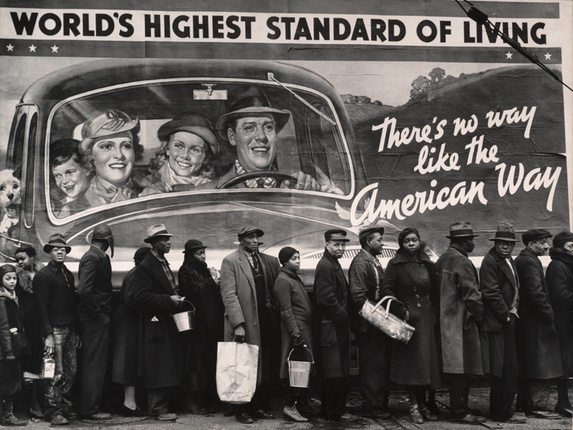Margaret Bourke-White Exposes Economic Disparities (1937)
In January 1937, a historic flood of the Ohio River led to 350 deaths and forced nearly a million residents from their homes. Photographer Margaret Bourke-White travelled to Louisville, Kentucky to capture what happened in the aftermath. Louisville suffered extensive damage. More than sixty percent of the city was underwater, thousands of people had to evacuate their homes and hundreds died. Economically, this was especially devastating because the flood occurred during the Great Depression. Although all Louisville residents suffered from the disaster and the Depression, residential segregation and racist employment practices made African Americans particularly vulnerable. This photo by Bourke-White appeared in Life magazine. In it, a line of Black Americans waited to receive emergency resources. They stood in front of a billboard that showed an image of a happy white family in a car. An advertisement for the National Association of Manufacturers, the billboard boasted: "World's Highest Standard of Living: There's No Way Like the American Way."
Item Type |
Cite This document | “Margaret Bourke-White Exposes Economic Disparities (1937) ,” SHEC: Resources for Teachers, accessed April 27, 2024, https://shec.ashp.cuny.edu/items/show/3342.



